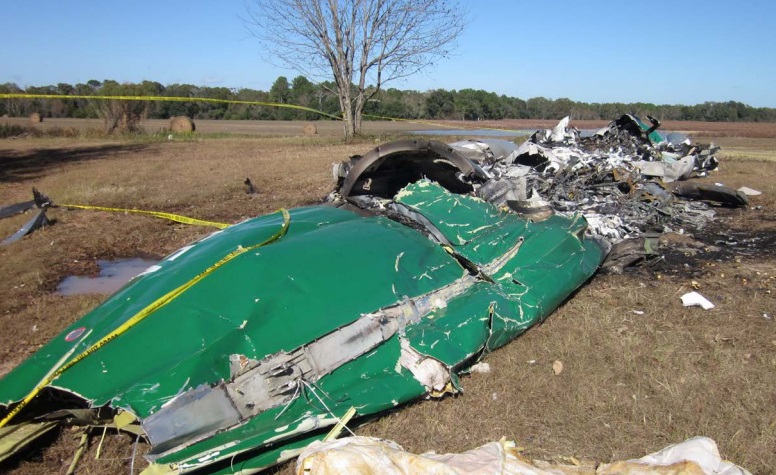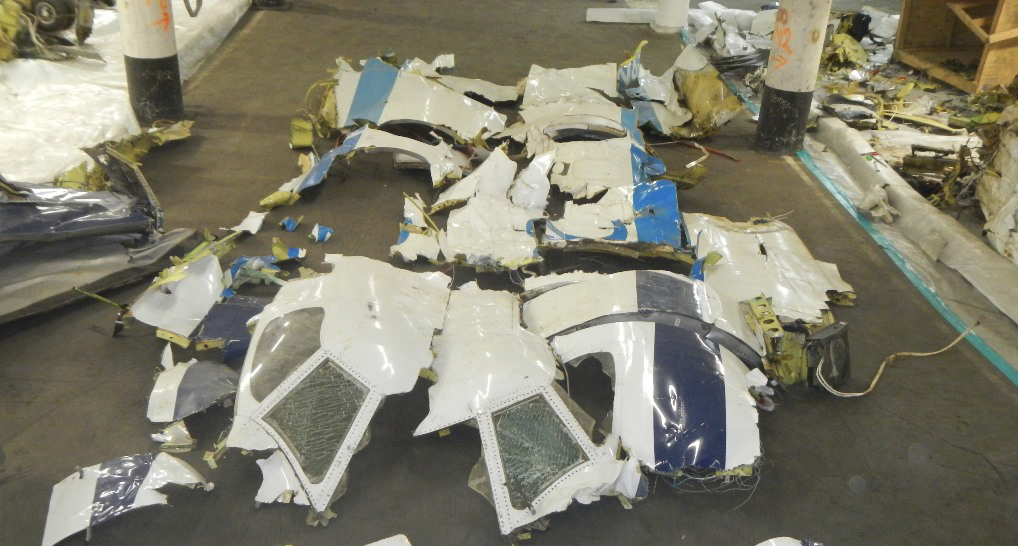NTSB Report on Puerto Rico SA-227 Metro III LOC-I – 2 Dec 2013
IBC Airways Fairchild SA-227 Metro III N831BC was performing a cargo flight from Santo Domingo (Dominican Republic) to San Juan (Puerto Rico) on 2 December 2013. It suffered a Loss of Control – Inflight (LOC-I) and structural break-up according to a recently issued US National Transportation Safety Board (NTSB) report. Both crew died and the aircraft was destroyed.
About 40 minutes into the flight in night visual meteorological conditions the aircraft was cleared for a a descent to 3,000 ft:
During the descent, about 7,300 ft and about 290 kts, the airplane entered a shallow left turn, followed by a 45-degree right turn and a rapid, uncontrolled descent, during which the airplane broke up about 1,500 ft over uneven terrain.
Among the challenges faced by the NTSB was that the aircraft:
…was not equipped with a flight data recorder or cockpit voice recorder (CVR) (although it previously had a CVR in its passenger configuration) nor was it required by Federal Aviation Administration (FAA) regulations. There were also no avionics on board with downloadable or nonvolatile memory. As a result, there was limited information available to determine what led to the uncontrolled descent or what occurred as the flight crew attempted to regain control of the airplane.
This does point to a weakness in Federal Aviation Regulations for small cargo aircraft, that could be especially significant when hampering investigations into technical failures that could hazard passenger aircraft.
The NTSB investigation established:
There was no evidence of any in-flight mechanical failures that would have resulted in the loss of control, and the airplane was loaded within limits.
During the accident sequence both wings failed upwards:
As the wings failed, the propellers simultaneously chopped through the fuselage behind the cockpit [and] the horizontal stabilizers…also failed upward.
Evidence also revealed that, at some point, the flight crew lowered the landing gear.
Although it could not be determined when they lowered the gear, it could have been in an attempt to slow or regain control of the airplane during the descent.
The NTSB examined past occurrences elsewhere:
Other similarly documented accidents and incidents generally involved unequal fuel burns, which resulted in wing drops or airplane rolls. However, in the current investigation, the fuel cross feed valve was found in the closed position, indicating that a fuel imbalance was likely not a concern of the flight crew.
In at least two other events, unequal fuel loads also involved autopilots that reached their maximum hold limits, snapped off, and rolled the airplane. Although the airplane in this accident did not have an autopilot, historical examples indicate that a sudden yawing or rolling motion, regardless of the source, could result in a roll, nose tuck, and loss of control. The roll may have been recoverable, and in one documented case, a pilot was able to recover the airplane, but after it lost almost 11,000 ft of altitude.
The NTSB say that in this case:
Although reasons for the loss of control could not be definitively determined, the lack of any preexisting mechanical anomalies indicates a likelihood of flight crew involvement. Then, during the recovery attempt, the flight crew’s actions, while operating under the difficult circumstances of darkness and rapidly decreasing altitude, resulted in the overstress of the airplane.
The flight crew’s excessive elevator input during a rapid descent under night lighting conditions, which resulted in the overstress and breakup of the airplane.
Contributing to the accident was an initial loss of airplane control for reasons that could not be determined because post-accident examination revealed no mechanical anomalies that would have precluded normal operation.
UPDATE 9 November 2018: This is not the only recent SA-227 in-flight break up. SA-227 N765FA of Key Lime Air, on charter to UPS, crashed in Camilla, GA on 5 December 2016 during a night, single pilot cargo flight. The NTSB determined the probable cause as:
The pilot’s decision to initiate and continue the flight into known adverse weather conditions, which resulted spatial disorientation, a loss of airplane control, and a subsequent in-flight breakup.

Wreckage of SA-227 N765FA of Key Lime Air in Camilla, GA after an Accident on 5 December 2016 (Credit: NTSB)





Recent Comments